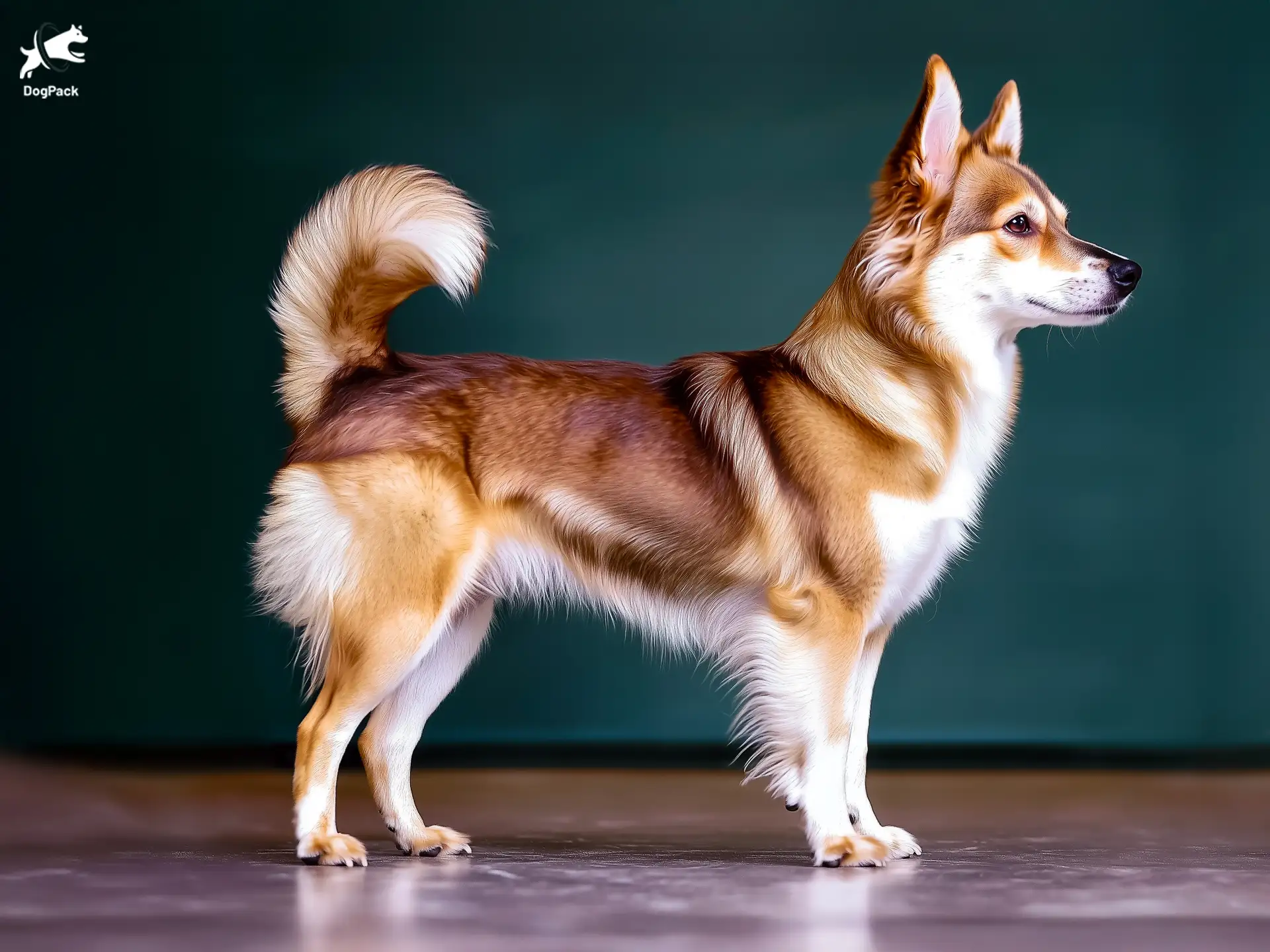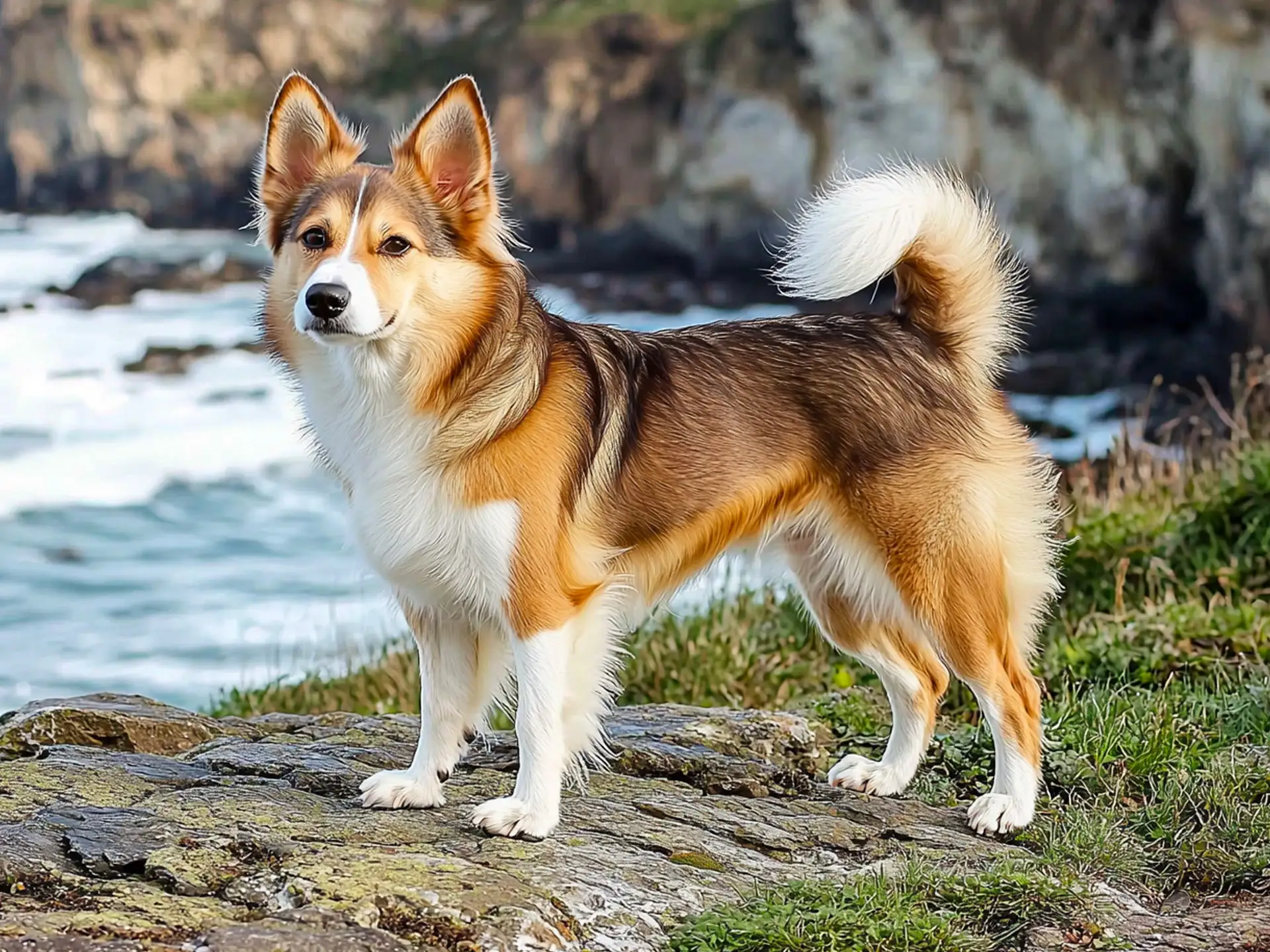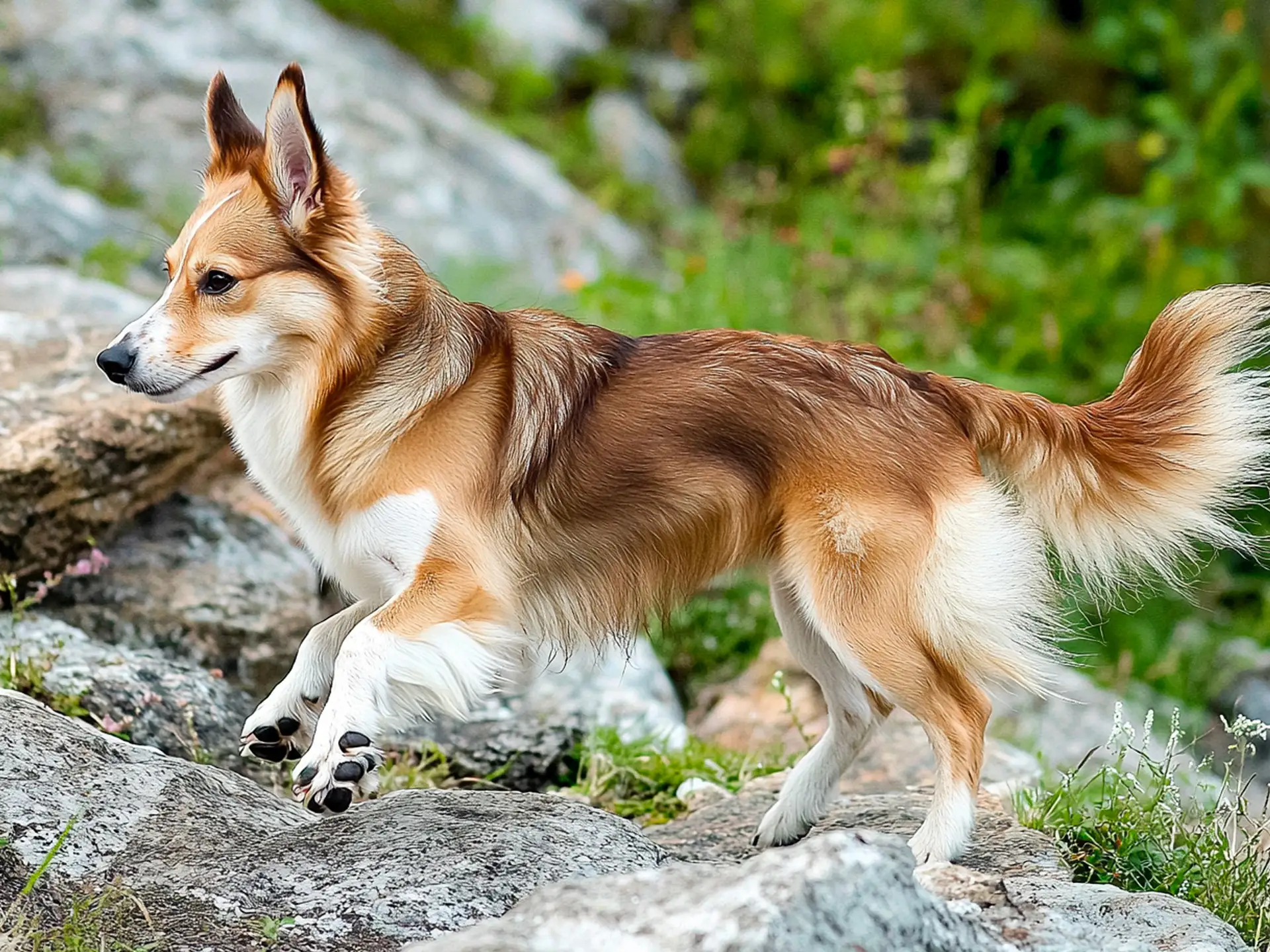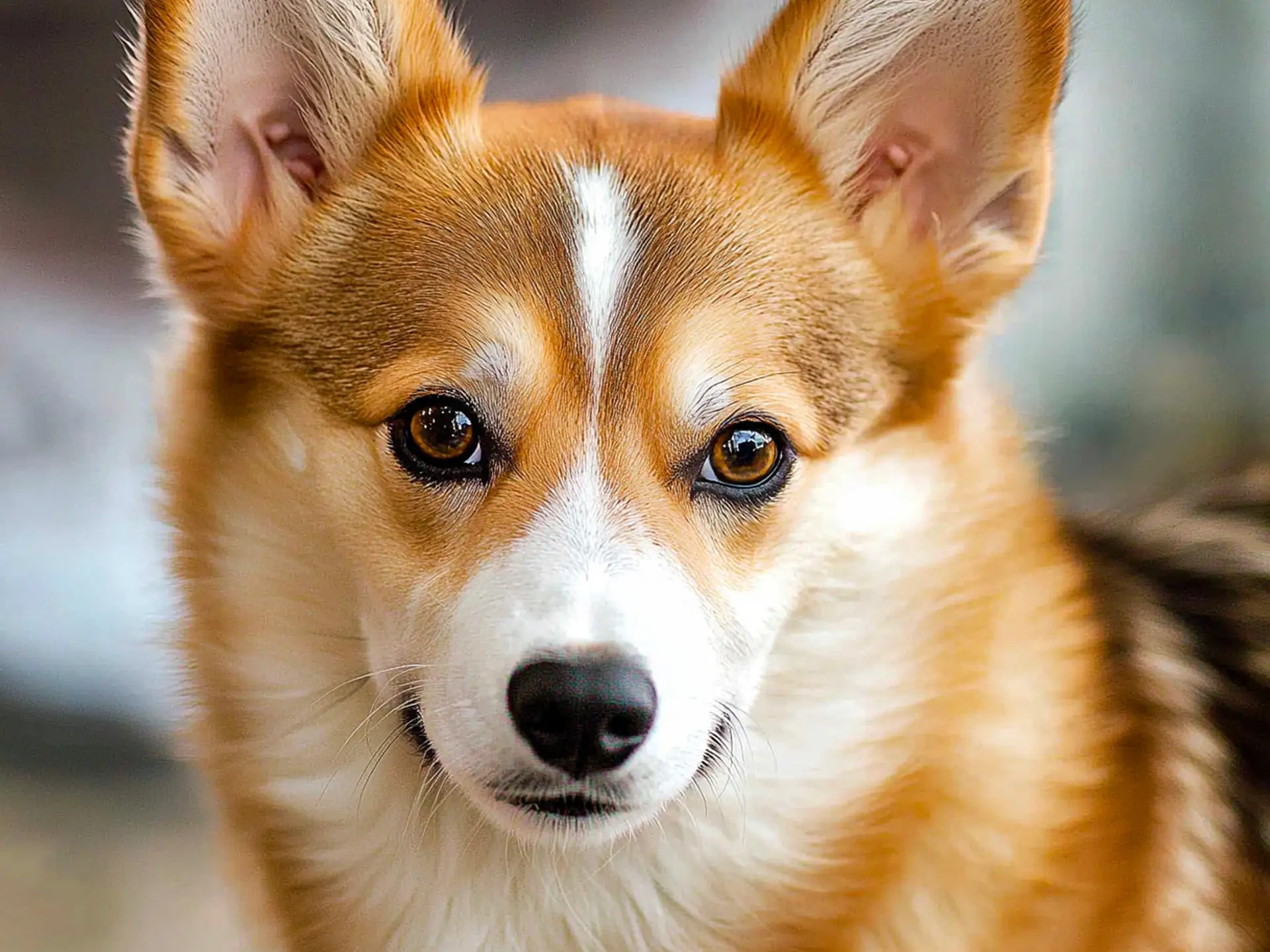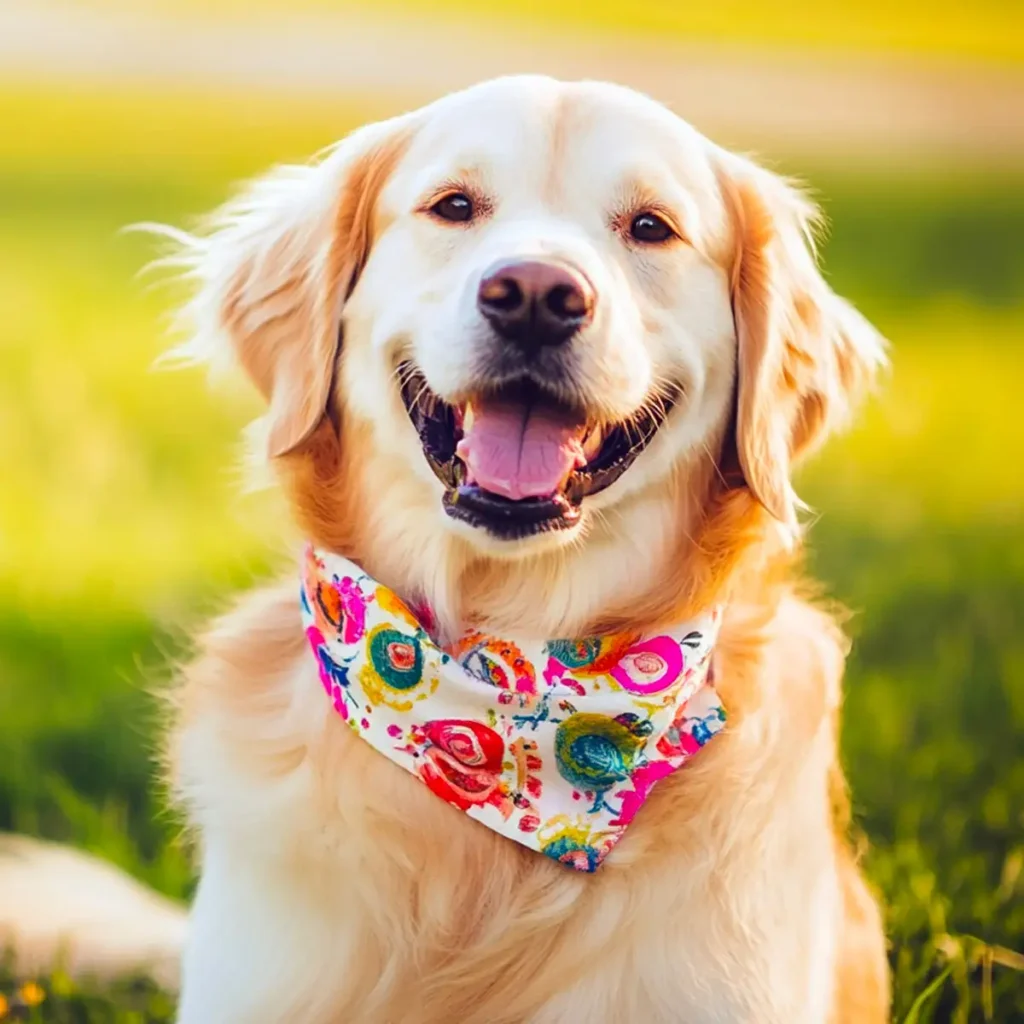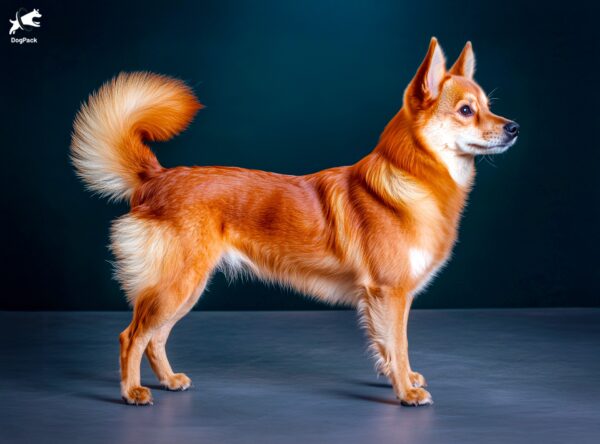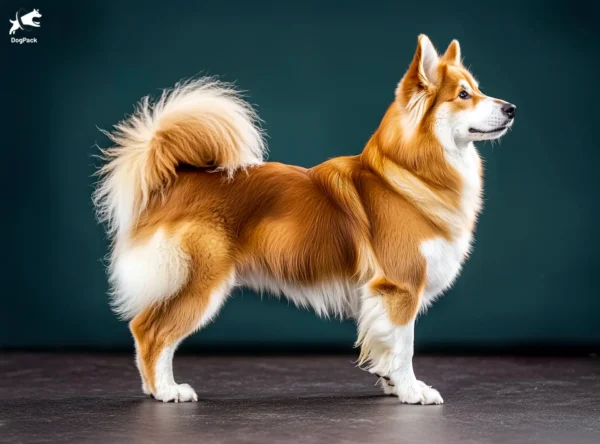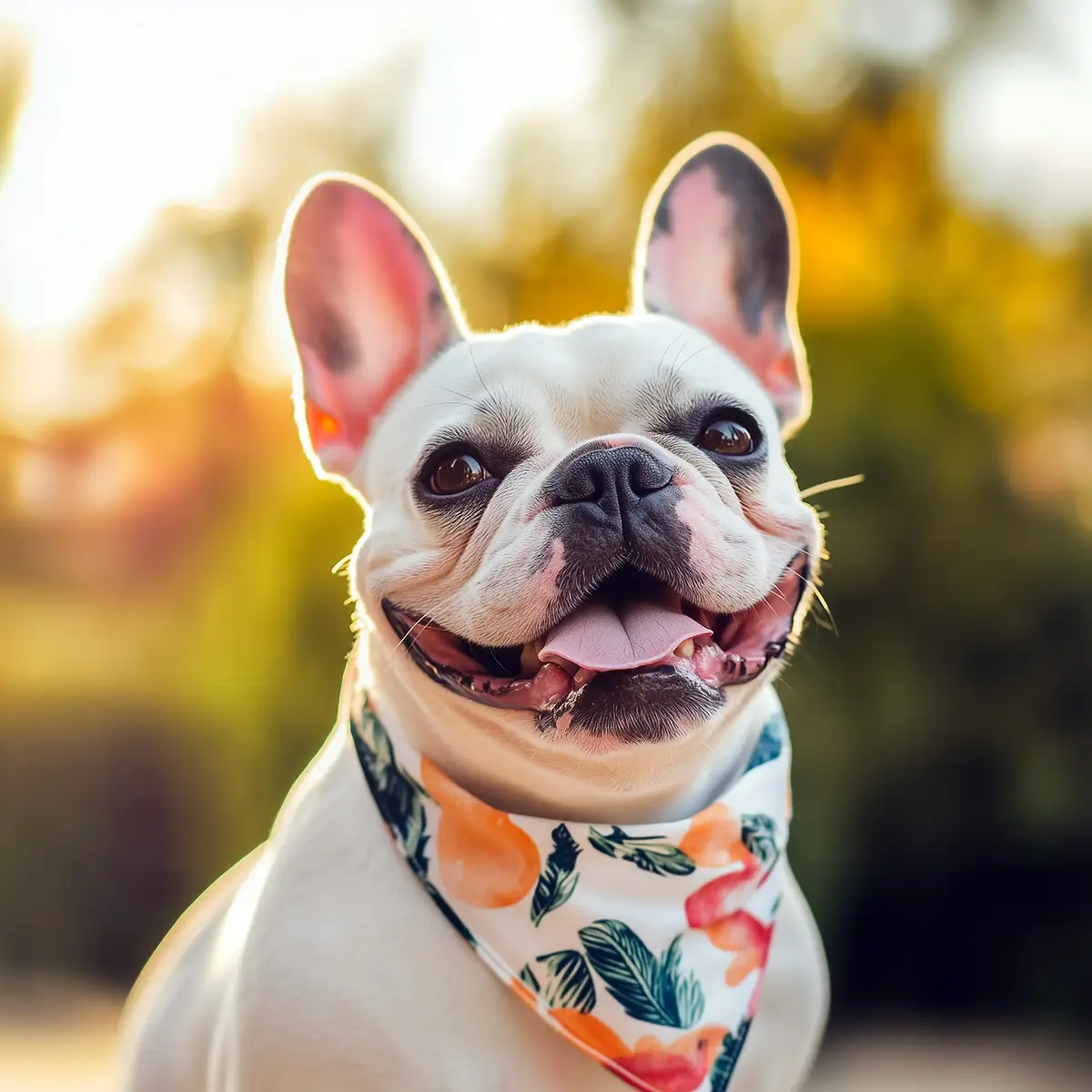Norwegian Lundehund Dog Breed Info & Overview
The Norwegian Lundehund, famously known as the “puffin dog,” is a rare and extraordinary breed from Norway. With super-flexible joints and extra toes, this agile canine was once bred to scale steep cliffs in search of seabirds. Intelligent, energetic, and truly one of a kind, the Norwegian Lundehund is a fascinating companion for those who appreciate a unique and adventurous breed.
Characteristics
Pictures
Breed History
Centuries ago, fishermen on Norway’s rugged coasts needed a specialized dog that could climb steep cliffs and squeeze into narrow crevices to retrieve puffins. That’s where the agile ‘puffin dog’ earned its keep. With unique joints allowing extraordinary flexibility, these canines were invaluable for capturing birds without damaging the valuable feathers or eggs.
This shift almost led to the breed’s extinction, with only a handful of dogs remaining on remote Norwegian islands. As a rare dog breed, dedicated enthusiasts worked tirelessly to revive these clever hunters, preserving their one-of-a-kind traits for future generations.
By the mid-20th century, breeding programs helped rebuild the population, securing the Norwegian Lundehund’s place in canine history. Today, though still relatively scarce, these dogs are cherished for their remarkable physical gifts and playful temperament. Their heritage as versatile seabird retrievers remains a proud reflection of Norway’s maritime culture and the role they once served.
Temperament, Personality
Friendly yet independent, this breed loves being around people but also appreciates having its own space. If you’re looking for a canine sidekick who’s equal parts playful and laid-back, you’ll find a lot to love here. The Norwegian Lundehund typically bonds closely with its family, offering affection and loyalty in a pint-sized package.
Though generally good-natured, these dogs can be reserved around unfamiliar faces. Early socialization is important to build confidence and help them navigate new situations. When introduced properly, they adapt quite well to calm visitors or other pets. But don’t be surprised if your pup remains cautious until they’ve decided the coast is clear.
Curious and alert, they’ll happily investigate every corner of the house—especially if there’s a snack involved. These pups have a playful streak that shines through in short bursts of energy. Toys and interactive puzzles can keep them mentally stimulated. Overall, they offer a gentle, enthusiastic spirit that’s delightful for dedicated owners with a little patience.
Physical Characteristics
One of the most intriguing features is the breed’s polydactyl nature—each foot has six toes, providing exceptional gripping ability. Combine that with double-jointed shoulders, and you have a canine contortionist that easily navigates rocky terrain. The Norwegian Lundehund also tends to have an elongated muzzle, large triangular ears, and bright, expressive eyes.
Standing roughly a foot tall at the shoulder, these dogs exude a compact yet sturdy presence. Their strong legs help them move swiftly over uneven ground, an essential trait for puffin retrieval in Norway’s cliffside habitats. With a balanced stance and flexible limbs, they might surprise you with just how agile they can be.
Their dense double coat is typically reddish-brown with white or black markings, though coats can vary slightly in shade. It’s not excessively long but sheds moderately throughout the year. With a tail that curves gently over the back, these pups have a fox-like elegance that makes them stand out in any canine crowd.
Health Issues
Like many rare breeds, the Norwegian Lundehund has a limited gene pool, which can lead to certain health concerns. One primary issue is Lundehund Syndrome, a group of gastrointestinal disorders that can manifest as malabsorption problems. Regular check-ups with a trusted veterinarian can help owners catch any potential red flags before they escalate.
Another concern includes patellar luxation, where the kneecap slips out of place. Symptoms range from occasional limping to a more chronic gait abnormality. While not every dog will experience this, it’s wise to keep an eye on how your pup moves. Early intervention can prevent discomfort and reduce long-term complications for active canines.
As with any breed, maintaining a balanced diet and healthy weight goes a long way toward preventing strain on joints and organs. Routine screenings, like hip evaluations and digestive health checks, can help detect minor issues early. Ultimately, working closely with a knowledgeable veterinarian ensures these dogs stay comfortable and active throughout their lives.
Grooming Needs
Thanks to their moderate shedding, caring for these pups is usually manageable. A weekly brushing session helps remove loose fur and reduces the amount you’ll find around the home. The Norwegian Lundehund’s coat has natural oils that protect it from moisture, so over-bathing can strip away those oils and cause skin dryness.
Pay special attention to those extra toes. Each digit needs occasional nail trimming to avoid discomfort or snagging on fabrics. Because the breed’s feet can trap moisture, it’s wise to inspect paw pads regularly, especially after outings in wet or muddy conditions. This simple habit helps prevent bacterial or fungal infections.
Aside from coat and nail care, check their ears once a week for signs of irritation or wax buildup. Gentle cleaning with a vet-approved solution keeps ear canals fresh and clear. Since this breed’s ears are fairly upright, they typically enjoy good airflow, reducing the risk of moisture-related problems or unpleasant odors.
Exercise Requirements
Despite their small stature, the Norwegian Lundehund thrives on regular activity. A brisk walk or two each day, coupled with some interactive play, helps channel their energy in a healthy direction. Consider mixing up the routine with short hikes or games of fetch to keep them both mentally and physically satisfied.
Because of their climbing abilities, activities that involve low-level agility—like traversing a gentle slope or practicing simple obstacle courses—can be especially fun. Just ensure they don’t overexert themselves. Frequent breaks for water, plus an eye on the temperature, keep them safe. These dogs may be small, but they’re surprisingly resilient when engaged in outdoor adventures.
Indoor play can also suffice on busy days. A puzzle toy or tug-of-war session burns energy while boosting mental sharpness. Allow them some time to roam and sniff—it satisfies their natural curiosity. As long as they receive daily opportunities to stretch their legs, these pups remain cheerful and ready for your next shared escapade.
Training Tips
Patience is key when guiding these dogs through obedience lessons. The Norwegian Lundehund can be headstrong and easily distracted by intriguing sights or smells. Positive reinforcement with treats or playtime usually works best, as harsh corrections might discourage them. Reward small victories and keep sessions short to maintain their enthusiasm.
Socialization should start young and continue throughout their lives. Introduce them to a variety of people, pets, and environments, always keeping interactions upbeat and safe. This helps combat any natural wariness they might feel around newcomers. Engaging them early reduces the likelihood of fearful behaviors developing as they mature.
Consistent routines foster good habits. If your pup knows exactly when to expect meals, walks, and training sessions, they’ll quickly adapt to the household rhythm. Keep commands clear, and celebrate every success with praise. Over time, you’ll build a strong bond of trust, helping them understand that learning new commands can be enjoyable.
Nutrition, Diet
Because of their predisposition to digestive challenges, the Norwegian Lundehund often benefits from a carefully monitored diet. Choose easily digestible, high-quality dog food that prioritizes proteins over fillers. Many owners find success with limited-ingredient diets or those formulated for sensitive stomachs. Always introduce new foods gradually to minimize the risk of upset.
Caloric needs vary by activity level, but adult dogs typically require around 400 to 600 calories per day split between two meals. For those who enjoy daily hikes or more vigorous play, portion sizes may need adjustment. Keep an eye on their weight to ensure they’re staying lean, as extra pounds can exacerbate joint stress.
Supplementing with probiotic-rich foods or vet-approved digestive aids may help maintain gut health. Some owners incorporate bone broth or plain pumpkin to soothe sensitive stomachs. Fresh water should be available at all times to prevent dehydration. By sticking to a structured meal plan, you’ll support overall well-being and help reduce flare-ups of GI issues.
Adoption, Breeders
Locating a Norwegian Lundehund can be challenging due to their rarity. Start by exploring resources like the Norwegian Lundehund Club of America, which maintains breeder listings and offers guidance on responsible ownership. If you’re set on a puppy, be prepared for a waiting list. Reputable breeders prioritize health testing and transparent lineage information.
Adoption is another avenue, though it may require a bit more patience. Keep an eye on specialized rescue organizations that focus on rare or Nordic breeds. Platforms like Petfinder occasionally list these dogs, especially if an owner can no longer care for them. Patience and persistence often pay off in finding a match.
Whether adopting or buying, verify the dog’s health records and ensure it has been properly socialized. If possible, visit the facility or foster home to observe living conditions. Interacting with the parent dogs gives you an idea of temperament and potential health issues. Taking these steps leads to a more informed and responsible decision.
Family Pet?
If your family is searching for a smaller, active companion, this breed might be a match. The Norwegian Lundehund generally does well with gentle children, especially if introduced early. They have a playful streak that can align nicely with a household eager for interactive games or weekend adventures. However, boisterous play should be supervised to prevent accidental injuries.
These dogs often get along with other canines in the home, provided they’ve been socialized. They appreciate the company and can engage in spirited group play. When it comes to smaller animals, caution is wise since they might see quick movements as an invitation to chase. Early introductions usually help reduce potential conflicts.
Families that enjoy spending time outdoors will find a willing partner in these pups. They’re happiest when involved in daily activities and mental stimulation. Keep them busy with short hikes, interactive games, or puzzle toys, and they’ll reward you with companionship and silly antics. Just be prepared for a bit of comedic mischief now and then.
Right For You?
Before bringing home a Norwegian Lundehund, consider your lifestyle. These dogs thrive in households that can offer consistent engagement and moderate exercise. Apartment living is possible if you’re committed to daily walks and mental challenges, but a fenced yard for exploration is always a bonus. Their unique needs mean they may not suit every home.
If you travel often or work long hours, a more independent breed could be better. Lundehunds can become anxious if left alone for extended periods, potentially resorting to undesirable behaviors like excessive barking or destructive chewing. These pups do best with someone who can dedicate time to play, training, and supervision.
Ultimately, patience and a willingness to embrace quirky traits go a long way. If you’re excited by the idea of a dog with extra toes and an inquisitive spirit, this might be your perfect match. Provide mental stimulation, consistent guidance, and a loving environment, and you’ll have a loyal, entertaining companion for years to come.
Conclusion
From their six-toed paws to their storied history scaling Norwegian cliffs, this little dog has a personality that’s anything but ordinary. The Norwegian Lundehund can be an excellent match for those who appreciate unique canine qualities and are ready to invest time in proper socialization, training, and routine care. While it may not fit every household, its playful energy and loyal temperament offer endless amusement for the right family. If you’re seeking a rare companion with a storied heritage, this breed might just check all your boxes. Embrace the quirks and you’ll discover a truly special bond with one of the world’s most flexible and fascinating pups.
FAQs
-
Why does the Norwegian Lundehund have six toes on each foot?
The Norwegian Lundehund has six fully functional toes per foot, a rare trait developed for gripping slippery rocks and climbing steep cliffs while hunting puffins in Norway. This unique adaptation gives them exceptional balance and agility on uneven terrain.
-
Can the Norwegian Lundehund bend its neck backward?
Yes! The Norwegian Lundehund has extremely flexible joints, allowing it to bend its head backward until it touches its spine. This rare ability helped them maneuver inside narrow rock crevices while retrieving puffins.
-
Why does my Norwegian Lundehund sometimes refuse food?
This breed is prone to Lundehund Syndrome, a digestive disorder that affects nutrient absorption. If your Lundehund frequently refuses meals or has irregular digestion, consult a vet to manage their diet with specialized food and supplements.
-
Do Norwegian Lundehunds make good off-leash dogs?
Not really. Their strong hunting instincts mean they may chase birds or small animals without warning. Even with training, they’re naturally independent and may ignore recall commands, so off-leash time should be in secure areas.
-
Why does my Norwegian Lundehund sleep in unusual positions?
Due to their flexible spine and joints, Lundehunds often sleep in strange, contorted positions, like with their legs splayed out or their heads twisted at extreme angles. This is completely normal and stems from their ability to navigate tight spaces.
Breed Ratings
The Norwegian Lundehund is a sharp problem-solver that excels with puzzles, though it can be a tad stubborn during lessons.
The Norwegian Lundehund has a lively spirit and enjoys engaging games, especially those that let them use their climbing instincts.
The Norwegian Lundehund is moderately active, thriving with daily walks and interactive play that keeps both body and mind engaged.
The Norwegian Lundehund’s coat sheds moderately year-round, but weekly brushing helps manage fur and keeps their skin healthy.
The Norwegian Lundehund retains some hunting instincts, so smaller pets might need cautious introductions to ensure peaceful cohabitation.
The Norwegian Lundehund generally requires minimal grooming, though attention to extra toes and regular brushing will keep them looking sharp.
These dogs are clever yet can be headstrong, so consistent, reward-based training is best. Patience goes a long way in teaching new tasks.
The Norwegian Lundehund can grow anxious if left solo too long, potentially leading to barking or mischief without proper engagement.
They aren’t constant barkers but will alert you to unfamiliar sounds. Early training helps keep vocal habits in check.
This breed rarely drools, making it a good choice for owners who prefer a tidier home environment.
With proper socialization, the Norwegian Lundehund tends to get along well with other canines, enjoying energetic group play.
Though prone to Lundehund Syndrome and joint issues, regular vet care and a careful diet help these dogs maintain a good quality of life.

